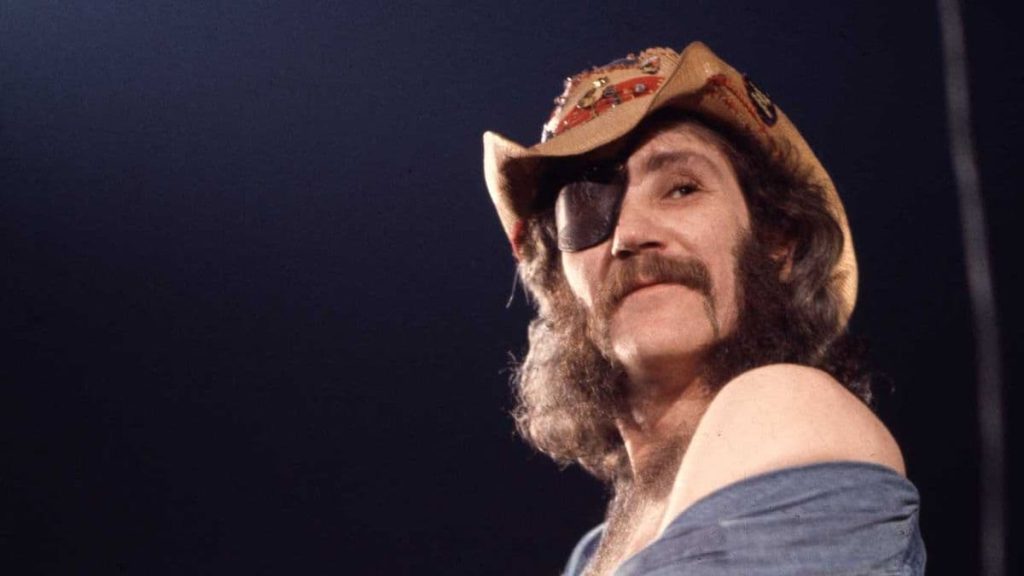
Dr. Hook’s “The Cover of ‘Rolling Stone’”: A Satirical Masterpiece That Became a Cultural Phenomenon
In the pantheon of rock and roll anthems, few songs capture the self-aware humor and rebellious spirit of the 1970s quite like “The Cover of ‘Rolling Stone'” by Dr. Hook & the Medicine Show. Released in 1972, this tongue-in-cheek ode to rock stardom and the allure of celebrity catapulted the band to new heights, reaching number 6 on the Billboard Hot 100. It’s a track that, through its wit and irony, encapsulates the era’s fascination with fame, while also critiquing the very industry it sought to dominate.
“The Cover of ‘Rolling Stone'” was penned by the legendary songwriter Shel Silverstein, whose work for Dr. Hook helped define the band’s quirky and irreverent style. Known for his sharp humor and keen observational skills, Silverstein crafted a song that was both a parody and an anthem—a celebration of rock and roll’s absurdities, wrapped in the desire for validation through one of the most iconic symbols of success: the cover of Rolling Stone magazine.
Musically, the song is a playful blend of rock and country, featuring a catchy, sing-along chorus that became instantly recognizable. The arrangement is intentionally loose and carefree, reflecting the band’s image as laid-back rebels who didn’t take themselves too seriously. Lead singer Ray Sawyer’s distinctive raspy vocals, along with the harmony-rich backing from Dennis Locorriere, give the song its unique charm, making it both memorable and relatable.
Lyrically, the song tells the story of a band that has experienced all the trappings of rock stardom—sex, drugs, outrageous behavior—but still hasn’t achieved the ultimate recognition: a feature on the cover of Rolling Stone. Lines like “We’ve got a genuine Indian guru who’s teaching us a better way” and “We got all the friends that money can buy” are delivered with a knowing wink, poking fun at the excesses of the rock lifestyle while also acknowledging the band’s desire for mainstream success.
When “The Cover of ‘Rolling Stone'” was released, it struck a chord with listeners who appreciated its humor and insight. The song’s success wasn’t just a reflection of its catchy melody; it was also a comment on the cultural moment, where being featured on the cover of Rolling Stone was seen as the pinnacle of achievement in the music world. The magazine itself played along with the joke, eventually featuring Dr. Hook on its cover in March 1973—complete with the caption, “What’s-Their-Names Make the Cover.”
The impact of “The Cover of ‘Rolling Stone'” extended beyond its chart success. It became an anthem for the disillusioned and a favorite among fans who loved the band’s ability to mix humor with sharp social commentary. For Dr. Hook, the song was a defining moment that cemented their place in rock history, even as it skewered the very concept of rock stardom.
In the decades since its release, “The Cover of ‘Rolling Stone'” has remained a beloved classic, celebrated not just for its humor, but for its enduring relevance in a culture still obsessed with fame and recognition. It’s a song that reminds us that behind every rock star, there’s a very human desire for validation—and that sometimes, the best way to deal with that desire is to laugh at it.
For Dr. Hook, a band known for their eclectic style and offbeat humor, “The Cover of ‘Rolling Stone'” was more than just a hit single; it was a statement. It encapsulated the absurdity of the rock and roll dream, while also embracing it wholeheartedly. As a result, the song remains one of the band’s most iconic tracks, a testament to their unique place in the world of music.